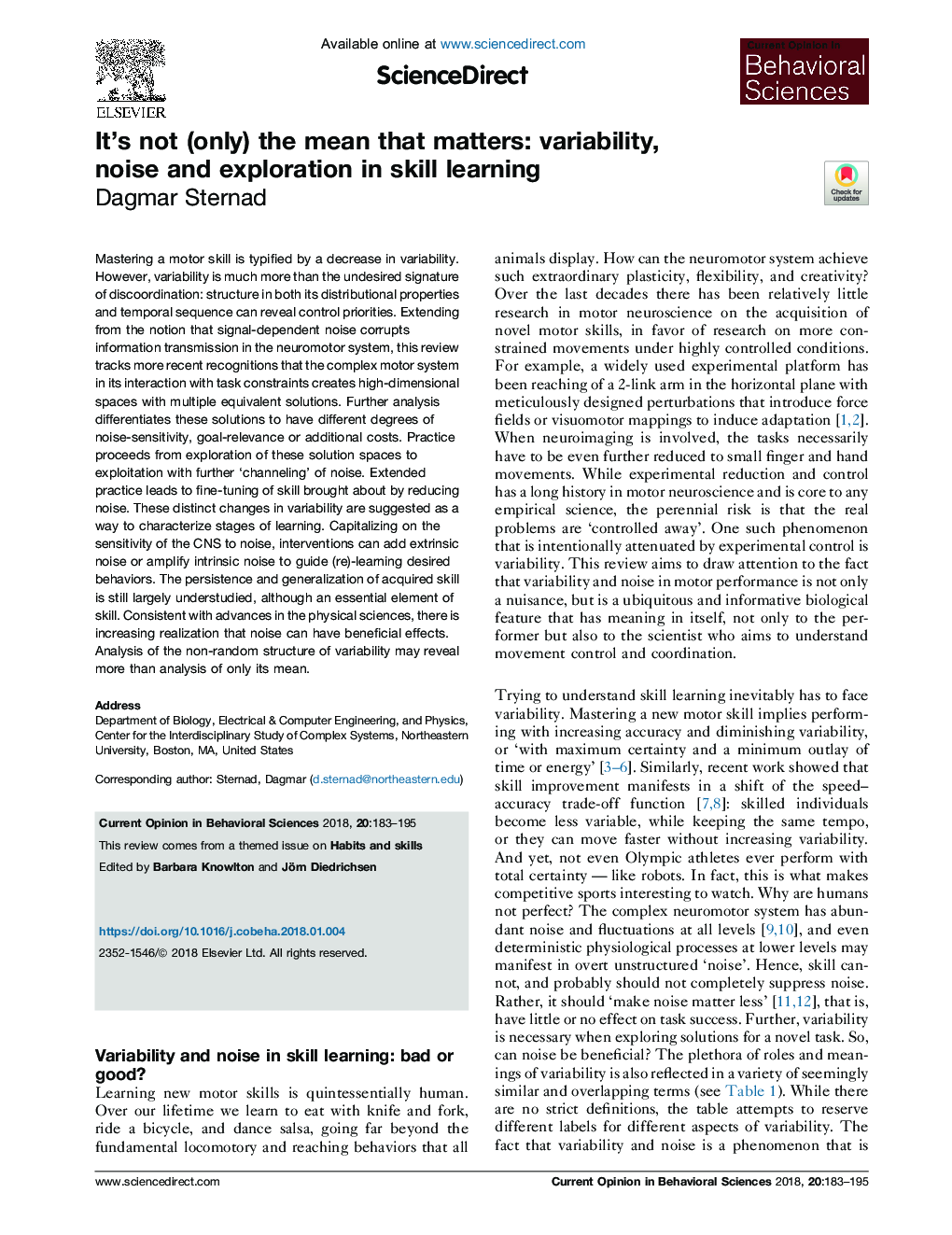| Article ID | Journal | Published Year | Pages | File Type |
|---|---|---|---|---|
| 8838169 | Current Opinion in Behavioral Sciences | 2018 | 13 Pages |
Abstract
Mastering a motor skill is typified by a decrease in variability. However, variability is much more than the undesired signature of discoordination: structure in both its distributional properties and temporal sequence can reveal control priorities. Extending from the notion that signal-dependent noise corrupts information transmission in the neuromotor system, this review tracks more recent recognitions that the complex motor system in its interaction with task constraints creates high-dimensional spaces with multiple equivalent solutions. Further analysis differentiates these solutions to have different degrees of noise-sensitivity, goal-relevance or additional costs. Practice proceeds from exploration of these solution spaces to exploitation with further 'channeling' of noise. Extended practice leads to fine-tuning of skill brought about by reducing noise. These distinct changes in variability are suggested as a way to characterize stages of learning. Capitalizing on the sensitivity of the CNS to noise, interventions can add extrinsic noise or amplify intrinsic noise to guide (re)-learning desired behaviors. The persistence and generalization of acquired skill is still largely understudied, although an essential element of skill. Consistent with advances in the physical sciences, there is increasing realization that noise can have beneficial effects. Analysis of the non-random structure of variability may reveal more than analysis of only its mean.
Related Topics
Life Sciences
Neuroscience
Behavioral Neuroscience
Authors
Dagmar Sternad,
